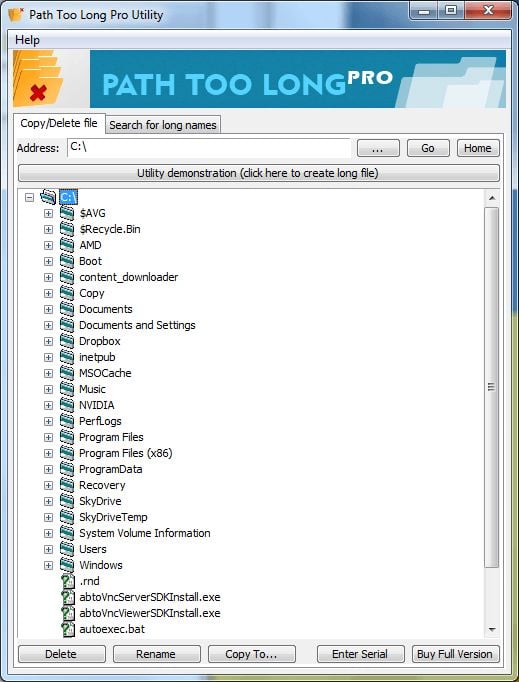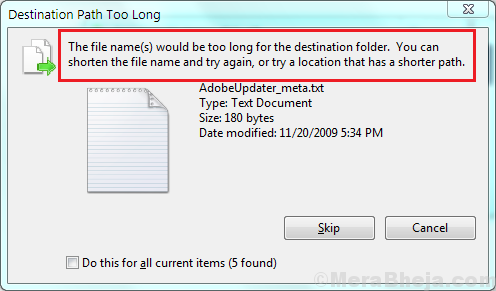
This feature looks very interesting, since it finally addresses one of the pain points of working with Windows. You can subscribe to our YouTube channel here: Youtube.
#Long path tool batch file copy how to
How to enable NTFS Long Paths in Windows 10 using a Registry tweak See the following screenshot:įinally, there is a way to enable this new feature without using Group Policy. Note: Even if you are running 64-bit Windows, you still need to create a 32-bit DWORD value. On the right side, create a new 32-bit DWORD value named LongPathsEnabled.If you don't have such a key, then just create it. Tip: You can access the desired Registry key with one click. Go to the following Registry key: HKEY_LOCAL_MACHINE\System\CurrentControlSet\Policies.How to enable NTFS Long Paths in Windows 10 using a Group Policy tweak There, double click and enable the option Enable NTFS long paths.Go to Local Computer Policy -> Computer Configuration -> Administrative Templates -> System -> Filesystem -> NTFS.


However, the Explorer Shell still has had this limitation in Windows for years.

For example, the alternative file management tool, Total Commander can help you access such files and folders, since it is able to work with long paths out of the box. In such a situation, the user has no other solution but to either use symbolic links to access that data or a third party tool which uses workarounds. There are also workarounds like accessing the Unicode (or "wide") versions of the Windows API functions, and also by prefixing the path with \\?\.Īt the end user level, some users might have already faced the issue in the past, when File Explorer doesn't allow access to a file or a folder, if the path to it exceeds 260 chars. This is not a limitation of the NTFS file system but of the legacy APIs that are used to access data.

However, there is a limitation of 260 characters for the path imposed by Windows, which includes the drive letter, colon, separating backslashes and a terminating null character. A path is a string value that indicates where that data is stored. Advertisement All Windows file systems have a concept of files and folders to access stored data.


 0 kommentar(er)
0 kommentar(er)
